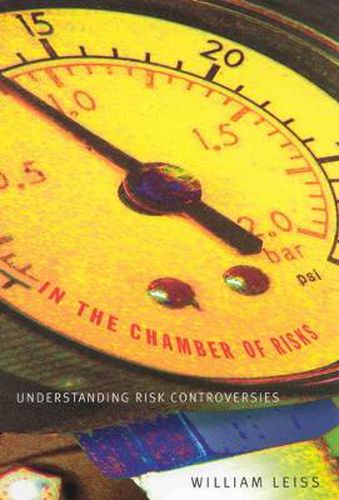Readings Newsletter
Become a Readings Member to make your shopping experience even easier.
Sign in or sign up for free!
You’re not far away from qualifying for FREE standard shipping within Australia
You’ve qualified for FREE standard shipping within Australia
The cart is loading…






In In the Chamber of Risks William Leiss demonstrates that case studies of risk controversies show that those instincts are unreliable guides to effective risk management and that in all cases the opposite position is a far better guide. As risk management is inherently disputable, public perceptions of risk should be seen as legitimate and treated as such and the public should always be involved in discussions about risk evaluations made by scientists and risk managers.; Leiss chronicles the erratic course of risk management and communication in environmental management in Canada, discussing the notable controversies that have arisen over pesticides and breast cancer, vinyl toys, genetically engineered food crops, cellular telephones, and antibiotic-resistant bacteria, among many others. He focuses on risk management - how we make decisions about and assess hazards in the environment - and on risk communication - social dialogue that deals with both our intuitive feelings of concern about substances or activities that might hurt our health or the environment, and the scientific and probabilistic description of them.; Leiss shows that both risk management and risk communication, when properly constructed, require an elaborate process because the very things that can cause harm are in most cases the same things that bring us great benefits, such as paper mills, electricity from nuclear power generating stations, or wireless telecommunications.;
$9.00 standard shipping within Australia
FREE standard shipping within Australia for orders over $100.00
Express & International shipping calculated at checkout
In In the Chamber of Risks William Leiss demonstrates that case studies of risk controversies show that those instincts are unreliable guides to effective risk management and that in all cases the opposite position is a far better guide. As risk management is inherently disputable, public perceptions of risk should be seen as legitimate and treated as such and the public should always be involved in discussions about risk evaluations made by scientists and risk managers.; Leiss chronicles the erratic course of risk management and communication in environmental management in Canada, discussing the notable controversies that have arisen over pesticides and breast cancer, vinyl toys, genetically engineered food crops, cellular telephones, and antibiotic-resistant bacteria, among many others. He focuses on risk management - how we make decisions about and assess hazards in the environment - and on risk communication - social dialogue that deals with both our intuitive feelings of concern about substances or activities that might hurt our health or the environment, and the scientific and probabilistic description of them.; Leiss shows that both risk management and risk communication, when properly constructed, require an elaborate process because the very things that can cause harm are in most cases the same things that bring us great benefits, such as paper mills, electricity from nuclear power generating stations, or wireless telecommunications.;